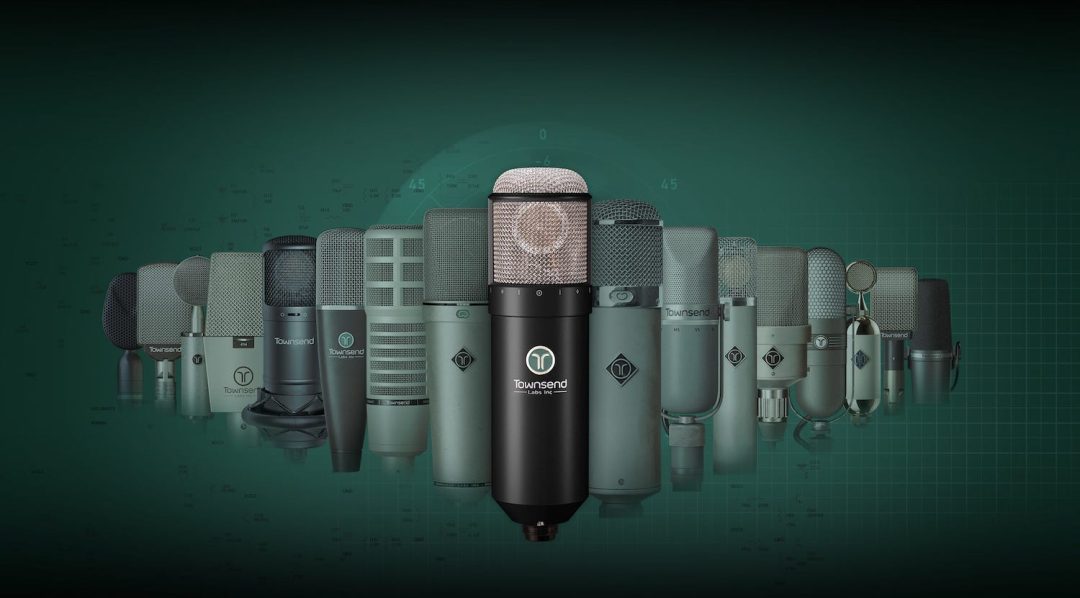The Townsend Labs Sphere L22 modeling microphone initially emerged as a game-changer that challenged traditional recording paradigms. Harnessing the power of innovative modeling algorithms and precision engineering, the Sphere L22 took mic emulation to an unprecedented level. We occasionally review discontinued products available on the secondhand market, and the Townsend Labs Sphere L22 is worth a fresh review and revisit several years post-release.
Introducing the Townsend Labs Sphere L22
The Sphere L22 ingeniously combines the artistry of vintage microphone classics with the boundless potential of digital modeling. Pioneering a new era of versatility, this microphone and the UA Sphere plugin provides engineers, producers, and artists with access to an impressive array of iconic microphones.
- RELATED: UA Sphere DLX Review
- RELATED: UA Sphere DLX Demonstration
Gone are the days of needing an extensive microphone collection to achieve a vast array of sonic possibilities. The Sphere L22 strives to be the one-stop solution for capturing the essence of legendary microphones, from vintage classics to rare and elusive gems.
What Is a Modeling Mic & How Do They Work?
A modeling microphone, also known as a microphone emulator or virtual microphone, is a specialized type of microphone that can emulate the characteristics and tonal qualities of various other microphone types. Instead of being limited to the inherent sonic characteristics of a single physical microphone, modeling mics employ advanced digital signal processing algorithms to simulate the sound of multiple classics, often replicating the nuances of renowned vintage models.
Modeling microphones typically have multiple capsules built into their physical design. These capsules are strategically arranged to capture sound from different angles and positions, much like various pickup patterns found in traditional microphones.
Townsend Labs Sphere L22 Review
Key Features of the Townsend Labs Sphere L22
- Dual-Capsule Design: The Sphere L22 features a dual-capsule design, which means it has two separate microphone capsules strategically arranged to capture sound from different angles and positions. This enables the microphone to accurately emulate a wide range of microphones, including condensers, dynamics, and ribbons. It also allows for stereo recordings from a single mic.
- High-Resolution Modeling: Townsend Labs employs high-resolution modeling algorithms in the Sphere L22. These advanced algorithms capture the intricate details of each emulated microphone, resulting in incredibly accurate and authentic emulations of classic microphones’ sonic characteristics.
- Real-Time Emulation: The Sphere L22’s real-time emulation capabilities are among its standout features. With virtually zero latency when paired with an Apollo interface, users can switch between different microphone emulations during recording sessions. This instant access to various microphone models empowers creativity and helps fine-tune the perfect sound.
Sound Quality and Performance
The sound quality of the Townsend Labs Sphere L22 is widely regarded as exceptional and is one of its most acclaimed aspects. The microphone’s ability to faithfully emulate a diverse range of classic microphones has earned it high praise from audio professionals and recording enthusiasts alike.
When not using any microphone emulation, the Sphere L22 functions as a high-quality, neutral condenser microphone. This transparency ensures that the microphone captures sound accurately and faithfully, making it an excellent choice for capturing pristine audio in its natural state.
Versatility and Applications
With a vast collection of virtual microphone models, the Sphere L22 offers an impressive versatility in sound. It can emulate the warmth of vintage tube microphones, the detail of modern condensers, the smoothness of classic ribbons, and more. This adaptability makes it a valuable tool for a wide range of recording applications and musical genres.
Having a dual-capsule design is also incredibly handy, letting engineers capture stereo recordings from a single microphone. Additionally, you can record in dual mono and create blends of two different mics later on.
Price
The L22 has since been replaced by the UA Sphere DLX. It debuted at $1499, just like the newer DLX, and brand new models are still kicking around online here and there. If you can find one secondhand, you can score an L22 for under $1000, which is quite a bargain.
How Does the Sphere L22 Compare to Other Modeling Mics?
The Townsend Labs Sphere L22 (and now the UA Sphere DLX) is still considered one of the leading modeling microphones on the market. Its features and sound quality have set it apart from contenders.
It’s essential to keep in mind that individual preferences and specific uses can influence how a modeling microphone is perceived. Some engineers and artists might prefer the sound of a particular microphone emulation over others, depending on the project requirements and their artistic vision.
Closing Thoughts: Why We Love the Townsend Labs Sphere L22
Overall, the Townsend Labs Sphere L22 is lauded for its ability to deliver studio-grade sound quality while providing an unmatched level of flexibility through its modeling capabilities. It’s garnered praise for its accuracy in emulating revered microphones, effectively reducing the need for a large microphone collection and offering a convenient all-in-one solution for capturing professional-grade audio in various recording and mixing scenarios.
